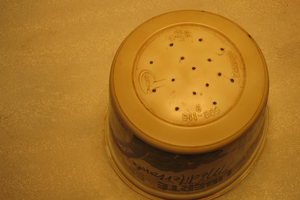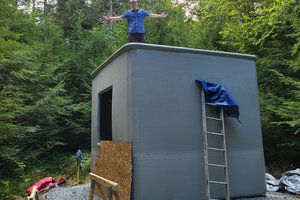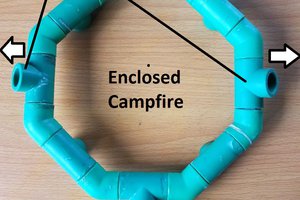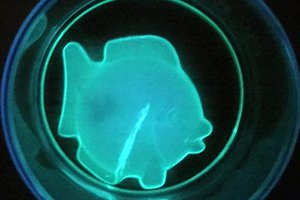Here's an Amazon parts list for a 55 Watt version.
Some components are optional.
All you really need is: A germicidal bulb, a compatible ballast, a plug for the outlet and something to attach everything to.
Secure the components using hot glue or Zip ties.
Hot glue works best.
If you can't find a stick, use this wooden "thing ga ma jig" I've included in the list.
Any 24' by 1.5" piece of non electrically conductive wood like material will work.
Big enough for the bulb and handle. with a little margin to protect the bulb and to keep your hand away from the ballast and wires.
Here's a link to the list.
New DIY Accessories for more Germicidal fun with you Ultraviolet Lightsabre.
Improvised Whole Room UV-C Air Sanitizer to use with your home built, light powered, hand held Microbial Death Machine.
Ultraviolet Germicidal Air Sanitizer build.
Works with your virus slaying ultraviolet sword of light.
Be careful! This could melt your face.
Keep in mind, this will only impact airborne germs. Commercial or in home devices like this typically use lower watt bulbs and the light is focused on some thing like the air conditioner evaporator, Which I supposed could harbor mold. UV-C light kills all microbes, eventually given enough time, intensity and proximity. Fluence is the measure of light similar to a dose of medicine. Time proximity and distance are all important. Changes to any of these quickly changes effectiveness. Inverse square law describes this. It's also important to remember that the UV-C light can only destroy what it can get to. UV-C is blocked by our Ozone layer or it'd get all of us. Some UV-A and UV-B reach the earths surface. UV-C is easily blocked. A particle of dust will block it. The effectiveness you read about for UV-C against Covid-19 has apparently now been proven. But the models all assume, clear air or vacuum between the light and the germ. It's in some less than perfect conditions. Such as designs that allow multipass exposure to the light source. UV-C is effective through other mediums like water, but the requirements and calculations are different. The more opaque the medium the less effective it be at killing germs for a single pass.
A better design, could be similar to a UV-C water sanitation design. Widely used all over the world. In fact the bulbs I use are primarily design for water sanitation but well water for a single home is a more likely application for these. Water reactors in these systems hold water for a duration to ensure proper exposure and sanitation. All microbes we worry about including Polio and Corona virus have a known exposure to UV-C light to kill or doable them. (Covid-19 apparently requires a fraction 1/3 or 1/6 exposure to disable than the common cold. What a wuss?)
Back to the point, the water containment reactor then allows the now sanitized treated water to pass. The reactor is now ready for the next batch festering pond water. It's not an uninterrupted mass of water. It works one distinct volume at a time. An air chamber built similar to a bellows could do the same for air I'd think. Capture a volume of air, expose it to UV_C for some duration, then pass it on. Cycling the entire volume of air in the room repeatedly. It wouldn't take long to cycle the air in a large room through a small bellows running constantly. It would be very easy to calculate the rate for device and room and the dose or fluence or exposure. Effectiveness or at least predictability should improve. I will build one of these eventually. But don't wait for me. I encourage others to do the same and share your results.
Chris
Use what you have. the pics show what I used. Many better ways to do this. Feel free to make and share your improvements.
The furnace air filter can be any size. Honestly, it's probably not doing a lot. Maybe slowing down the air.. Intensity, distance and duration all impact how effective UV-C is at...
Read more » Chris.Hicks
Chris.Hicks






 Alex Bell
Alex Bell
 Anteneh Gashaw
Anteneh Gashaw
 M. Bindhammer
M. Bindhammer
UV-C is ineffective unless unless it has a direct contact with the surface. That being Said
UVC is probably the best method os sterilizing mask because it does not effect the electrostatic charge on the N95 Fibers. Other Vapor methods and heating can effect the mask and severely degrade there performance.
https://www.medrxiv.org/content/10.1101/2020.03.25.20043489v1.full.pdf
https://www.nebraskamed.com/sites/default/files/documents/covid-19/n-95-decon-process.pdf
Keep up the good work